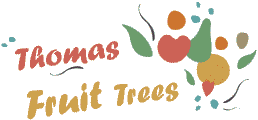Amere de Berthencourt cider apple trees
Malus domestica - Self-fertility: Not self-fertile
- Flowering group: 2
Amere de Berthencourt is a traditional French bittersweet cider apple. The apples are mostly pale yellow, and quite small, with a very bitter flavour - they cannot be eaten.
Amere de Berthencourt produces a high quality juice which can be used to create a single varietal cider or blended with other cider varieties.
Amere de Berthencourt organic cider apple trees for sale
11 yeartree on M116 rootstock29.25€Medium tree
(2m-3.5m after 10 years)
Bare-root
Sold-out
21 yeartree on MM111 rootstock28.00€Large tree
(3m-5m after 10 years)
Bare-root
Sold-out
31 yeartree on Bittenfelder rootstock28.00€Very large tree
(5m-6m+ after 10 years)
Bare-root
Sold-out
Contact us if you would like to go on the waiting list for next season.
EU delivery countries Click here to view estimated delivery charges
Click here to view estimated delivery charges.
Growing and Training
Amere de Berthencourt flowers much earlier than most French cider varieties, but is readily pollinated by other early-blooming apple varieties.
The main problem is likely to be over-cropping, leading to biennial bearing is another issue - but this can be avoided by careful thinning of the fruitlets in early summer.
History
Amere de Berthencourt comes from the traditional cider growing area around the town of Berthencourt in Normandy. In English its name means "the bitter apple from Berthencourt".
Amere de Berthencourt characteristics
- Gardening skillAverage
- Self-fertilityNot self-fertile
- Flowering group2
- Disease resistancePoor
- Season of use2-3 weeks
- Food usesHard cider
- USDA cold hardyZone 4 (-34C)
- Summer average maximum temperaturesCool ( 20-24C / 68-75F)
- Country of originFrance
- Period of origin1850 - 1899
- Flower colourWhite
- Flesh colourWhite
- Fruit colourYellow / Orange
Similar varieties
DabinettDabinett is a traditional English cider apple variety, producing a bittersweet juice.
Kingston BlackKingston Black is one of the premier English cider varieties and produces a bittersharp juice.
MichelinMichelin (or Normandie Blanc) is a traditional French cider apple variety producing a bittersweet juice.
Wickson CrabWickson crab is a popular American hard-cider variety.
More about cider apple trees
Cider production in Europe is traditionally associated with three main regions - Asturias in north west Spain, Bretagne and Normandie in north west France, and the "west country" area of south-west England. These regions all face the Atlantic ocean and have cool temperate maritime climates.
Cider can of course be made with any variety of apples, but in these three regions apple varieties have evolved which are specifically intended for cider production - they have high levels of tannins which give "body" to the resulting cider, but which make them very unpalatable to eat fresh.
Good quality cider is almost always made with a blend of different apple varieties, using bitter, sweet, and sharp flavour components. It is quite common to mix in regular cooking and dessert apples to lend extra flavours.
If you are in an area with a hotter continental climate (with average summer maximum temperatures routinely over 30C) then you might want to consider using apple varieties that can withstand warmer temperatures, but still have good juice qualities. In this case rather than using European varieties you might want to seek inspiration from the very different "hard cider" traditions of North America, where dessert and crab-apples are widely used.
We have a good range of traditional English and French cider varieties, as well as a number of mainstream apple varieties with good juice qualities that lend themselves to cider production.
